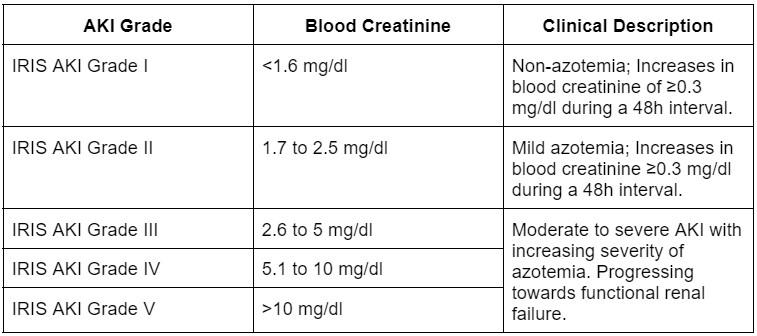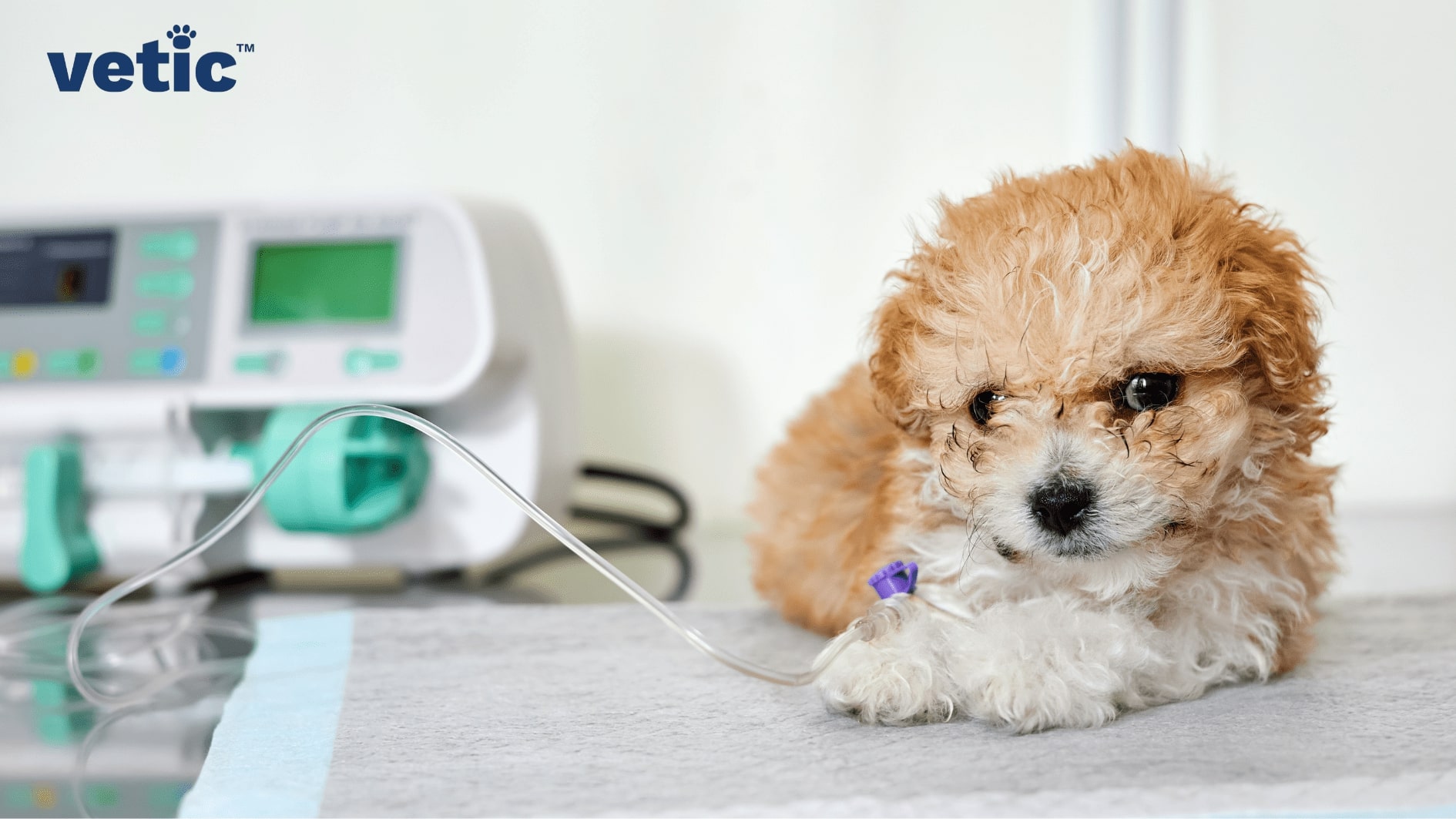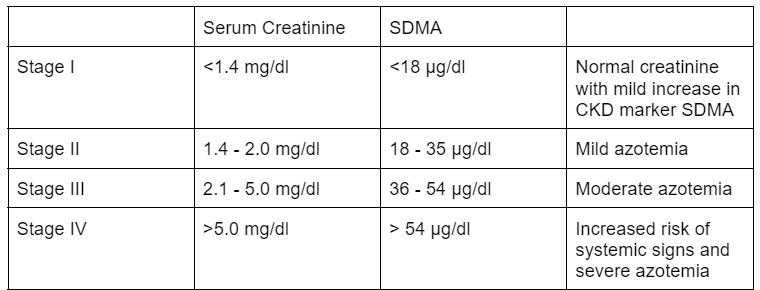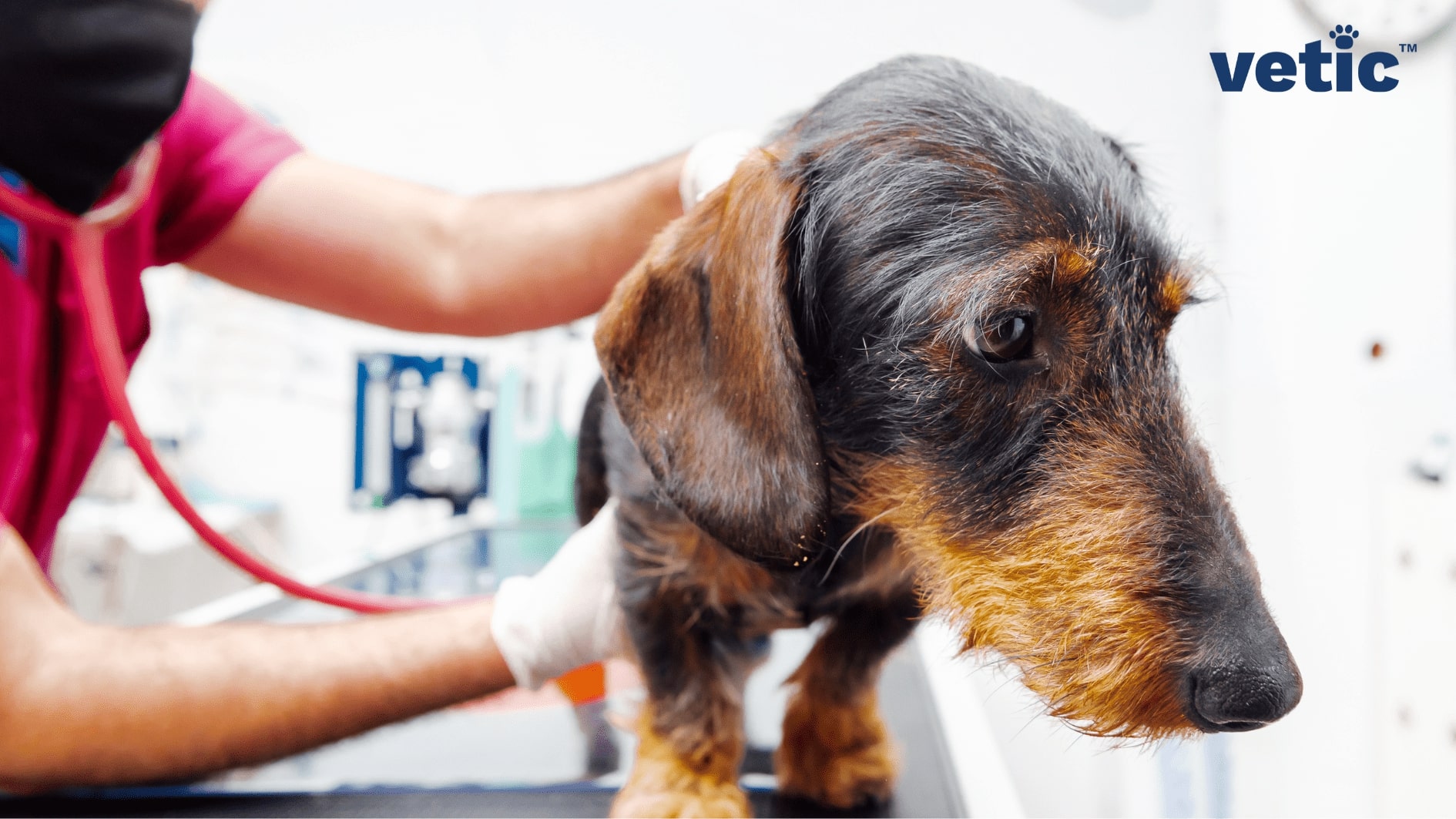Acute Kidney Injury (AKI) and Chronic Kidney Injury (CKI) in dogs can have similar signs, but they require differential diagnosis for proper treatment. The course of treatment for AKI and CKI are entirely different. Any pet parent with a dog suffering from renal problems should know the key points of both AKI and CKD.

Here are the basics we are going to learn today –
- What is acute kidney injury (AKI) in dogs?
- Grading Acute Kidney Injury (AKI) in dogs according to IRIS
- What can cause AKI in dogs?
- What are the signs of AKI in dogs?
- What are the available treatments of AKI?
- How does dialysis help with the treatment and prognosis of AKI in dogs?
- What is the outcome of AKI in Dogs?
- What is CKD in dogs?
- Grading CKD in dogs: IRIS Staging of CKD
- What can cause CKD in dogs?
- What are the signs of CKD in dogs?
- What are the available treatments for CKD in dogs?
- My dog has CKD, will he/she survive?
- Is CKD curable? Can dialysis help dogs with CKD?
- How do I effectively manage CKD in my dog?
What is acute kidney injury (AKI) in dogs?
Veterinarians have defined Acute Kidney Injury (AKI) as an increase in the serum creatinine levels above the normal reference range. Sadly, that is not an accurate or specific definition. AKI refers to the fast degeneration of kidney functions and accumulation of waste products in the body.
Impaired kidney function can lead to fluid retention in the abdomen, dehydration and severe electrolyte imbalance. Even with severe disruption of kidney function creatinine levels seem to stay within normal limits. Therefore, when high creatinine levels are noted in reports, it signifies significant AKI.
Grading Acute Kidney Injury (AKI) in dogs according to IRIS
According to the International Renal Interest Society (IRIS), AKI in dogs can be graded from I to IV. The grading depends upon the serum creatinine levels, urine output and preexisting renal disease of the patient.

What can cause AKI in dogs?
Acute kidney injury in dogs can be caused by internal and external factors. Sometimes, multiple factors work together to cause AKI. In an affected dog, it’s often difficult to determine the exact cause of kidney injury unless the owner knows that the dog was given an overdose of painkillers, a particular antibiotic or other chemicals toxic to the kidneys (nephrotoxic).
Nephrotoxicity can also arise from internal factors such as vasculitis, decrease of blood volume in the renal arteries, malignant hypertension, bladder or urethral tear, obstructions (stones) in the urethra.
Keep a keen eye on your dog’s diet. Find out what the ideal diet for your dog should be to protect them from kidney injury in the future. Never give them any medication without consulting the veterinarian first. If it’s an emergency, contact our 24/7 Vetic emergency clinic. We want to keep your pet safe and healthy in the long run.
What are the signs of AKI in dogs?
Any dog with AKI typically have the following signs for less than 1 week –
- Reduced appetite
- Anorexia
- Lethargy
- Vomiting and/or nausea
- Diarrhoea
- Frequent urination or no urination at all
- Weakness
Most dogs with exposure to nephrotoxins will not have a history of these signs and symptoms.
Apart from the clinical signs, your veterinarian will recommend blood tests, X-rays or USGs, and tests for Leptospirosis and E. canis to confirm the stage of AKI and determine the cause(s).
What are the available treatments of AKI?
The treatment for AKI in dogs is typically long-term.
The target of AKI treatment is to prevent dehydration and further damage to the kidneys. So, the veterinarians typically recommend fluid therapy to make up for the dehydration. The choice of IV fluid should restore the electrolyte disbalance.

Your veterinarian may recommend supportive medication or supplements for the treatment of your dog with AKI.
Recovery from AKI is not an overnight process. It can take between two weeks to one month for your dog to feel better. During the entire period, they may require maintenance fluid therapy until they are ready to go on a kidney-specific (renal) diet.
How does dialysis help with the treatment and prognosis of AKI in dogs?
Dialysis is a valid option for dogs with advanced AKI. Your veterinarian can suggest dialysis in addition to fluid therapy for your dog.
For AKI in dogs, there are two types of dialysis available –
Peritoneal dialysis in dogs with AKI
It is readily available for dogs with AKI in India. It removes the toxins from the system and stabilises the electrolytes. It is the most common choice of dialysis in dogs with AKI Stage III to V.
Hemodialysis for dogs with AKI
Intermittent hemodialysis is another option for severe AKI. The patient’s blood is constantly “purified” through the dialyser (an artificial kidney) to remove all the toxins including excess urea and creatinine. Intermittent hemodialysis is an efficient way to reduce the stress on the already injured kidneys.
Both peritoneal dialysis and hemodialysis have their risks. Always speak with an experienced veterinarian and go to a clinic with an established infrastructure necessary for dialysis.
Contrary to popular belief, it is entirely possible for dogs to recover and not require dialysis after a point in some cases of AKI. The possibility of going off dialysis depends on the extent of injury to the kidneys, fluid treatment protocol followed and the supportive therapy provided to your dog.
What is the outcome of AKI in Dogs?
The prognosis of AKI definitely depends upon early diagnosis. It also depends upon the efficacy of the chosen fluids and medications.
Research also shows an early recovery of dogs with AKI who begin eating during their fluid therapy stage. When the dog doesn’t begin within a few days of IV therapy, the veterinarian may place a feeding tube to deliver the required nutrition. Eating is a very important part of recovery for any dog with AKI since it preserves the GI mucosal integrity.
Sadly, there is no standardised renal diet for AKI. Your veterinarian may recommend renal dog food for your dog to reduce further stress and damage to your kidneys.
AKI in dogs is not always fatal. Sadly, many dogs develop other complications such as pancreatitis and respiratory distress due to AKI. These reduce their chances of recovery and survival. Between 40% and 60% of all AKI patients who receive hemodialysis survive.
50% AKI patients who are only treated with oral medication and IV fluids may have persistent CKD for life.
What is CKD in dogs?
CKD or chronic kidney disease in dogs refers to structural and functional degeneration of one or both of the kidneys. It only qualifies as CKD if the dog has had the clinical signs for 3 months or longer.
In a majority of the cases, CKD is irreversible even with aggressive treatment. Even after the correction or removal of the primary cause(s), improvement of kidney function is rarely possible. On the contrary, veterinarians have noted continuous and steady decline of kidney function even with the reversal of the primary cause(s).
CKD often causes a slow decline in kidney function. In many patients it can be a slow and progressive decline, while in others, periods of stability can interrupt the progression phase.
Grading CKD in dogs: IRIS Staging of CKD

What can cause CKD in dogs?
Kidney disease in dogs is not as uncommon as we’d like to believe. Some breeds are more prone to CKD including Shih Tzu, German Shepherd, Doberman, Rottweiler and Samoyed.
An increase in serum concentration of creatinine is an indicator of CKD. however, noticeable changes in creatinine levels also means around 75% destruction of the nephrons in one or both kidneys.
Researchers have found several factors that increase the risk of CKD in dogs – congenital conditions, genetics and acquired conditions. Acquired conditions are results of infections that compromise kidney functions. Many dogs that acquire infectious diseases such as borreliosis and leishmaniasis later develop CKD.
What are the signs of CKD in dogs?
The signs of CKD in dogs include –
- Increased thirst
- Lethargy
- Loss of appetite
- Anorexia
- Vomiting and nausea
- Diarrhoea
- Blood in urine
- Ulcers inside the mouth
By the time these signs become noticeable enough, the kidney damage is already significant. Most dog parents fail to notice these signs since the occasional lethargy, refusal of food, diarrhoea and vomiting is of no significance under normal circumstances.
What are the available treatments for CKD in dogs?
The proper treatment of CKD begins with chalking out a diagnostic plan to identify the underlying causes. The damage (lesions) of the kidneys aren’t reversible, even when the causal factors are removed. However, it can improve the quality of life and extend the life of the dog with CKD.

The causes of CKD that respond to treatment include few bacterial infections, obstructions in the urinary tract, excess amounts of calcium in the blood and renal lymphoma.
Fluid therapy is the main course of treatment for any dog with CKD since it can manage dehydration. The rest of the treatment depends upon the clinical signs and coexisting complications.
Prescribed renal diet is an integral part of CKD treatment for dogs. It has low phosphorus, high-quality protein and the right balance of omega-3-polyunsaturated fatty acids and antioxidants that support kidney function. The vet may recommend phosphate binders in addition to a renal diet for your dog.
My dog has CKD, will he/she survive?
The kidney lesions due to CKD are not reversible. It can reduce the life expectancy of your dog. However, their chances of survival will depend upon the stage of CKD. The choice of treatment significantly influences the patient’s chances of survival.
Our veterinarians consider a few factors to determine the prognosis of a dog with CKD.
- The nature of the primary kidney disease
- The intensity and duration of the signs of CKD
- The chances of any improvement of the renal functions
- The extent of the impairment of renal function
- The rate of progression of CKD
- The age of the dog
All six factors determine the chances of survival of the dog with CKD, but the IRIS CKD stage may be the most influential factor among them all.
Dogs with Stage I CKD are more likely to survive as compared to dogs with Stage II and III. The outcomes worsen as the Stages progress. Additional factors such as the presence of protein in the urine and (arterial) hypertension worsen the prognosis.
However, dogs with congenital or familial CKD show slower disease progression as compared to dogs with acquired renal disease.
Speak to a veterinarian experienced in treating kidney diseases in dogs to explore new treatments and your dog’s prognosis.
Is CKD curable? Can dialysis help dogs with CKD?
It is possible to slow the rate of progress of CKD, but it is not possible to cure it. Since it is impossible to reverse the scarring or lesions on the kidney due to the primary factors causing CKD, it is also impossible to restore or revive the damaged parts of the kidneys.
Complications of CKD such as anaemia, arterial hypertension, kidney hormone disbalance, hypo/hypercalcemia, malnutrition, electrolyte imbalance and dehydration further worsen the prognosis of CKD.
Dialysis is an effective way to remove the accumulated toxins from the blood and reduce the stress on the kidneys. Hemodialysis is preferred in cases of severe CKD. reduction of stress on the kidneys can slow the progression of CKD. Intermittent hemodialysis can provide comfort to the patient, improve their quality of life and increase their life expectancy. However, the same cannot be said for dogs with advanced CKD.
How do I effectively manage CKD in my dog?
Since hemodialysis and kidney transplantation are not accessible options for all dogs with CKD, veterinarians recommend effective management for CKD in dogs.

The renal damage in CKD is irreversible and almost always progressive, although the rates may vary.
Thus, the management of CKD revolves around –
- Early detection of the disease
- Treatments focused on renal protection and slowing the progression of the disease
Dogs with CKD require more than kidney medications and renal diet. They always require close monitoring of the kidney function parameters including BUN, creatinine, electrolytes and SDMA. Proper management of CKD also requires frequent urine analysis (testing) to determine the urine protein levels along with potential infections of the urinary tracts.
Other important points to remember for the management of CKD include –
- Only giving veterinarian-prescribed fluid types and quantities to your dog (both IV and oral)
- Not giving any nephrotoxic (toxic to the kidneys) to your dog
- Monitor blood pressure regularly
- Watch out for and prevent clinical dehydration due to vomiting
- Maintain electrolyte balance by using veterinarian recommended products such as phosphate binders and/or low-sodium diets.
In conclusion, how’s CKD different from AKI?
Here are some key differences and similarities between CKD and AKI.
| Acute Kidney Injury (AKI) | Chronic Kidney Disease (CKD) | |
|---|---|---|
| Onset | Sudden and rapid | Damage ongoing for at least 3 months |
| Reversibility | Damage can become irreversible if left untreated | Most of the damage is irreversible |
| Recovery | Early-stage AKI patients have a higher chance of recovery | Less chance of recovery due to irreversible damage |
| Treatment | Requires extensive veterinary treatment and care | Requires extensive veterinary treatment and care |
| Impact on Life Expectancy and Quality of Life | Can have grave impacts | Can have grave impacts |
Please note that both AKI and CKD are serious conditions that require immediate veterinary attention. The prognosis for each condition can vary based on a variety of factors, including the stage of the disease, the overall health of the dog, and the treatment plan.
